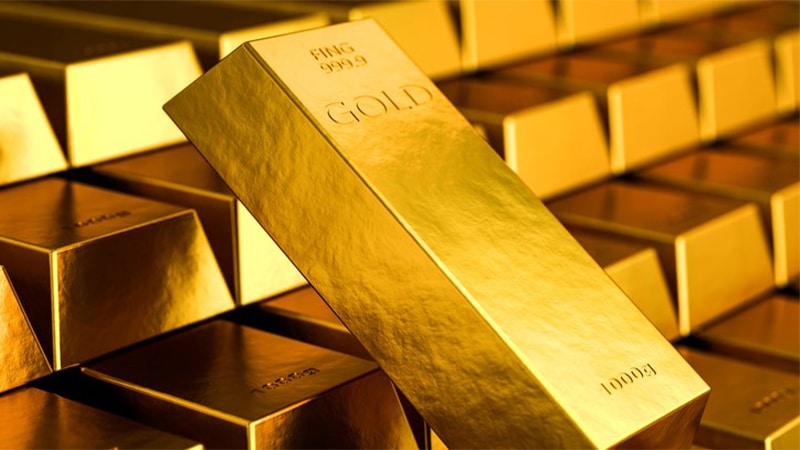Which commodities are the best hedge for inflation?


Investors are alert to US inflation risks as corporate earnings exceed expectations, the US persistently runs large budget deficits, and because of the opportunity for inflationary policies following the presidential election in November. Commodities have demonstrated strong resilience in the face of inflation and have been a critical hedge for bonds and equities when prices and wages are climbing, according to Goldman Sachs Research.
A 1 percentage point surprise increase in US inflation has, on average, led to a real (inflation adjusted) return gain of 7 percentage points for commodities, while that same trigger caused stocks and bonds to decline 3 and 4 percentage points, respectively, write Daan Struyven, head of oil research in Goldman Sachs Research, and analyst Lina Thomas in the team’s report.
The team finds that commodities provide a direct hedge against negative commodity supply shocks, which tend to depress bond and stock returns as interest rates rise, as well as providing a hedge against lower stock returns as rising prices cause GDP growth to slow. Commodities also tend to rally when inflation is boosted by economic growth, and they can provide wealth preservation when central bank credibility declines.
For its analysis, Goldman Sachs Research examines five inflationary periods over the past 50 years: the oil embargo of the early 1970s, the Iranian Revolution later that decade, China’s economic boom in 2005, its late-cycle boom in 2007-2008, and the post pandemic recovery that began in 2021. Each period was marked by shocks in terms of supply, demand, and/or growth. “Despite the different make-up in inflation drivers, commodities outperformed equities and bonds across all five episodes,” Struyven and analyst Thomas write. The same result occurs when considering inflation surprises in excess of 1 percentage point.
That said, not all commodities respond the same to higher inflation.
- Gold: The yellow metal typically only guards against very high inflation and large inflation surprises caused by losses in central bank credibility and geopolitical supply shocks. Gold usually didn’t perform well in response to positive demand shocks when the central bank responded swiftly by hiking rates.
- Energy: Historically, energy generated the strongest real returns across assets when inflation surprised to the upside. That’s because energy usually responded both to supply and demand shocks. While refined oil products remain the most important commodity for global consumer prices, recent episodes have shown that natural gas has significant inflation hedging benefits as well.
- Agriculture: Like energy, agriculture and livestock have provided similar inflation protection, as agriculture prices typically rose in response to negative energy supply shocks and could also rise during positive demand shocks.
- Industrial metals: Given their large exposure to cyclical manufacturing and the housing sector, industrial metals have demonstrated they could offer protection against demand-led inflation. Industrial metals generated especially high returns (average total real returns of 30%) late in the cycle when economy-wide inflation risks are the largest. One caveat is that the average real return for industrial metals has been only modestly positive when inflation surprises have been in the top 20% of history, probably because of their greater sensitivity to interest rate hikes.
How will the US election in November filter through the economy? Goldman Sachs Research’s US economists and cross-asset strategists expect that a unified government is more likely to see larger fiscal deficits, large shifts in fiscal policy, and downward pressure on bond returns than a divided government.
A sweep by Democrats could lead to significant increases in corporate taxes, which, along with tariff increases, could be negative for stocks. There may be higher inflation risks, and more risks to bond returns, under a Republican sweep amid, on the supply side, higher tariffs, slower immigration, and tighter sanctions on Iranian oil. On the demand side, lower taxes and stronger attempts to influence Fed policy may push up inflation.
The market reaction to geopolitical shocks, including tariffs, is the biggest swing factor in asset markets.
Gold may be the best hedge against inflation and geopolitical risks
Gold emerged as the best commodity to serve as a potential hedge against inflation and geo-political risks. Goldman Sachs Research’s base case is that gold appreciates to $2,700/troy ounce by year-end, an increase of about 16%, on solid demand from central banks in emerging markets and from Asian households. Gold could help shield against potential stock market drops if a trade war erupts, and it has upside if concerns mount about the US debt load or if the Fed is subordinated by a new administration.
Goldman Sachs Research also sees opportunity in oil as a geopolitical/inflation hedge — both because of its strong historical record as a broad inflation hedge and because there’s potential for a hawkish shift in US policy against some major oil-producing countries.
This article is being provided for educational purposes only. The information contained in this article does not constitute a recommendation from any Goldman Sachs entity to the recipient, and Goldman Sachs is not providing any financial, economic, legal, investment, accounting, or tax advice through this article or to its recipient. Neither Goldman Sachs nor any of its affiliates makes any representation or warranty, express or implied, as to the accuracy or completeness of the statements or any information contained in this article and any liability therefore (including in respect of direct, indirect, or consequential loss or damage) is expressly disclaimed.
Our signature newsletter with insights and analysis from across the firm
By submitting this information, you agree that the information you are providing is subject to Goldman Sachs’ privacy policy and Terms of Use. You consent to receive our newletter via email.